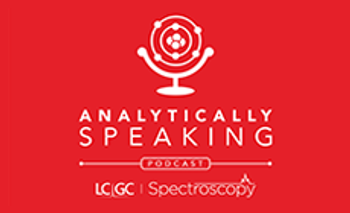
Portable Spectrometer Market to Grow Past $4 Billion by 2030
Portable spectrometers allow the equipment to be taken to the sample, as opposed to the sample to the spectrometer, moving the laboratory to the point of need.
The global portable spectrometer market size was valued at $1,675.7 million in 2020. Now, a new report finds that it is projected to reach $4,065.7 million (over $4 billion) by 2030, registering a compound annual gross rate (CAGR) of 9.1% from 2021 to 2030, according to a new report published by Allied Market Research, a market research firm based in Wilmington, Delaware (1).
Portable spectrometers allow the equipment to be taken to the sample, as opposed to the sample to the spectrometer, thus moving the laboratory to the point of need—the location of the sample. That portability, combined with algorithms and libraries for identification and quantification, provide a transformative experience to researchers and data alike, changing the way in which people work, by enabling on-site analyses, followed by informed decision-making (2).
“The portable spectrometer market has observed significant growth in the past few years. The rise in life science sector and laboratories for R&D activities fuel the demand for portable spectrometer in upcoming years. Further, the market growth is boosted by surge in forensics, medical health, and biochemistry sector,” said Amar Chinchane, lead analyst, Construction and Manufacturing at Allied Market Research, said in a quote on the company’s website.
Portable spectrophotometers offer an attractive alternative to laboratory-based quality control spot checks and production line testing. Through the minimization, if not outright elimination, of relying on benchtop instrumentation, portable spectrophotometers limit waste in the production process, thus improving its overall efficiency (3). In addition, portable spectrometry provides increased sensitivity over other analytical systems. This is a result of reduced background intrusion and superior specificity from characteristic fragmentation patterns to detect unknown compounds. Furthermore, portable spectrometry equipment can also identify existence of suspected compound and data regarding molecular weight of the compound in the mixture and provides data about isotopic abundance of elements and chemical data determined for a short term.
Various governments globally are taking initiatives to detect and identify chemicals and hazardous drugs for research purposes. Based on a review by researchers at the University of Lethbridge (Lethbridge, Alberta, Canada) and Carleton University (Ottawa, Ontario, Canada), ion mobility spectrometry was determined to be among the best methods for point-of-care drug testing (4).Therefore, such factors are expected to provide lucrative growth in the market during the forecast period.
Key companies profiled in the portable spectrometer market report include Agilent Technologies, Thermo Fisher Scientific, ABB, Metrohm, PerkinElmer, Bruker Corporation, Jasco Corporation, Hitachi High-Tech Corporation, MKS Instruments, and Anton Paar.
The report provides an extensive analysis of the current and emerging portable spectrometer market trends and dynamics, revealing key findings such as:
- Depending on product type, the optical spectrometer segment dominated the portable spectrometer market, in terms of revenue, in 2020.
- By application, the life sciences segment registered highest revenue in 2020. Based on distribution channel, the online sector is projected to register highest growth rate in the coming years.
The report provides an extensive analysis of the current trends and emerging opportunities of the market, with in-depth portable spectrometer analysis is conducted by constructing estimations for the key segments between 2021 and 2030.
References
- Allied Market Research website. https://www.alliedmarketresearch.com/press-release/portable-spectrometers-market.html
- Crocombe, R. A. Portable Spectroscopy. Appl. Spec. 2018, 72 (12), 1701–1751. DOI: 10.1177/0003702818809719
- The Benefits of Portable Spectrophotometers for Eliminating Production Line Waste. HunterLab website. https://www.hunterlab.com/blog/the-benefits-of-portable-spectrophotometers-for-eliminating-production-line-waste/#:~:text=For%20many%20manufacturers%2C%20portable%20spectrophotometers,production%20process%2C%20improving%20overall%20efficiency
- Harper, L.; Powell, J.; Pijl, E.M. An Overview of Forensic Drug Testing Methods and Their Suitability for Harm Reduction Point-of-Care Services. Harm Reduct. J. 2017, 14, 52 (2017). DOI: 10.1186/s12954-017-0179-5
Newsletter
Get essential updates on the latest spectroscopy technologies, regulatory standards, and best practices—subscribe today to Spectroscopy.




